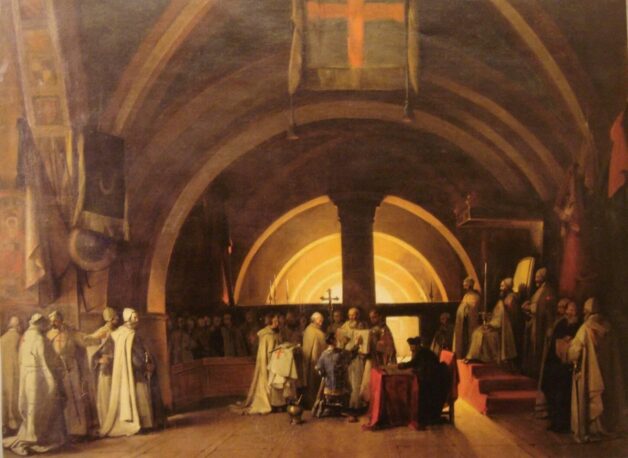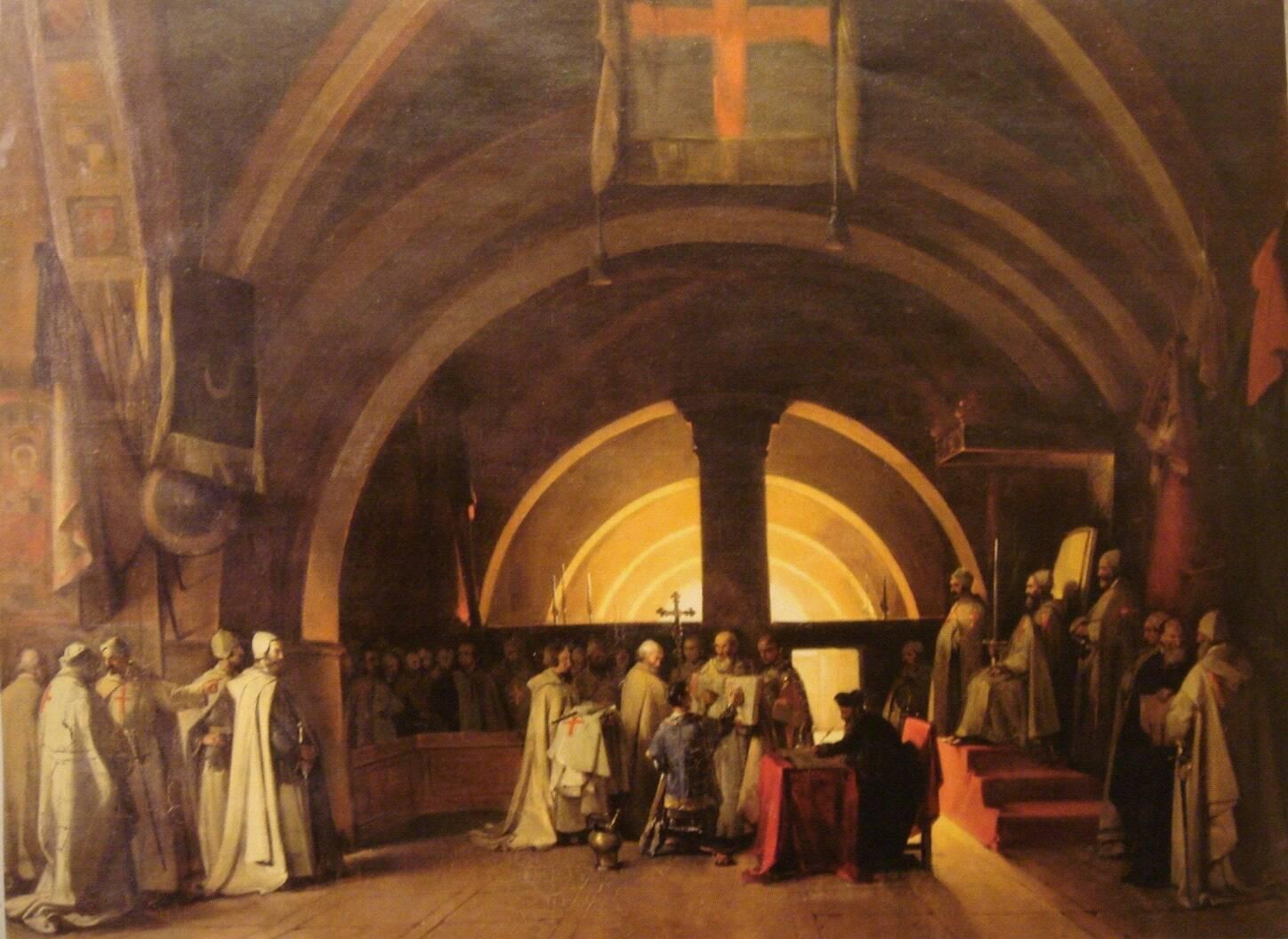Marcin Piatkowski posted on FB:
Today marks the 710th anniversary of the tragic death of the Grand Master of the Order of the Knights Templar, JACQUES DE MOLAY, and the Order’s Preceptor of Normandy, GEOFFROI DE CHARNEY, the Order’s Visitor of France, HUGUES DE PERAUD, and the Order’s Master of Aquitaine, GODEFROI DE GONNEVILLE, who, as a consequence of a plot by Philip IV, King of France, and the papacy, were burnt at the stake after seven years of imprisonment and torture. It is worth mentioning that Pope Clement V retracted his earlier accusations of heresy against de Molay and the Order (as indicated by a document found a few years ago in the Vatican Library). This makes King Philip IV the main instigator of the murder and suppression of the Order, which had vast financial resources subsequently seized by the French crown.
De Molay said at his execution that God would avenge his death. And indeed, within a year both Philip IV and Pope Clement V had fallen ill and died. The French king’s descendants also departed this world in a very short time.
Here’s a learning: never mess with powerful people unless you have more strength and willpower than them.
Account of Molay’s death by Henry Charles Lea:
“The cardinals dallied with their duty until 18 March 1314, when, on a scaffold in front of Notre Dame, Jacques de Molay, Templar Grand Master, Geoffroi de Charney, Master of Normandy, Hugues de Peraud, Visitor of France, and Godefroi de Gonneville, Master of Aquitaine, were brought forth from the jail in which for nearly seven years they had lain, to receive the sentence agreed upon by the cardinals, in conjunction with the Archbishop of Sens and some other prelates whom they had called in. Considering the offences which the culprits had confessed and confirmed, the penance imposed was in accordance with rule — that of perpetual imprisonment. The affair was supposed to be concluded when, to the dismay of the prelates and wonderment of the assembled crowd, Jacques de Molay and Geoffroi de Charney arose. They had been guilty, they said, not of the crimes imputed to them, but of basely betraying their Order to save their own lives. It was pure and holy; the charges were fictitious and the confessions false. Hastily the cardinals delivered them to the Prevot of Paris, and retired to deliberate on this unexpected contingency, but they were saved all trouble. When the news was carried to Philippe he was furious. A short consultation with his council only was required. The canons pronounced that a relapsed heretic was to be burned without a hearing; the facts were notorious and no formal judgment by the papal commission need be waited for. That same day, by sunset, a pile was erected on a small island in the Seine, the Ile des Juifs, near the palace garden. There de Molay and de Charney were slowly burned to death, refusing all offers of pardon for retraction, and bearing their torment with a composure which won for them the reputation of martyrs among the people, who reverently collected their ashes as relics. (Note: the account varies by one day, not unusual for chronicles of the middle ages)”
[source of the quotation: A History of the Inquisition of the Middle Ages Vol. III by Henry Charles Lea, NY: Hamper & Bros, Franklin Sq. 1888, p. 325.]
Attached is the painiting by Marius Granet (1777-1849), The Ordination of Jacques de Molay in 1265 in the commandery of Beaune.


